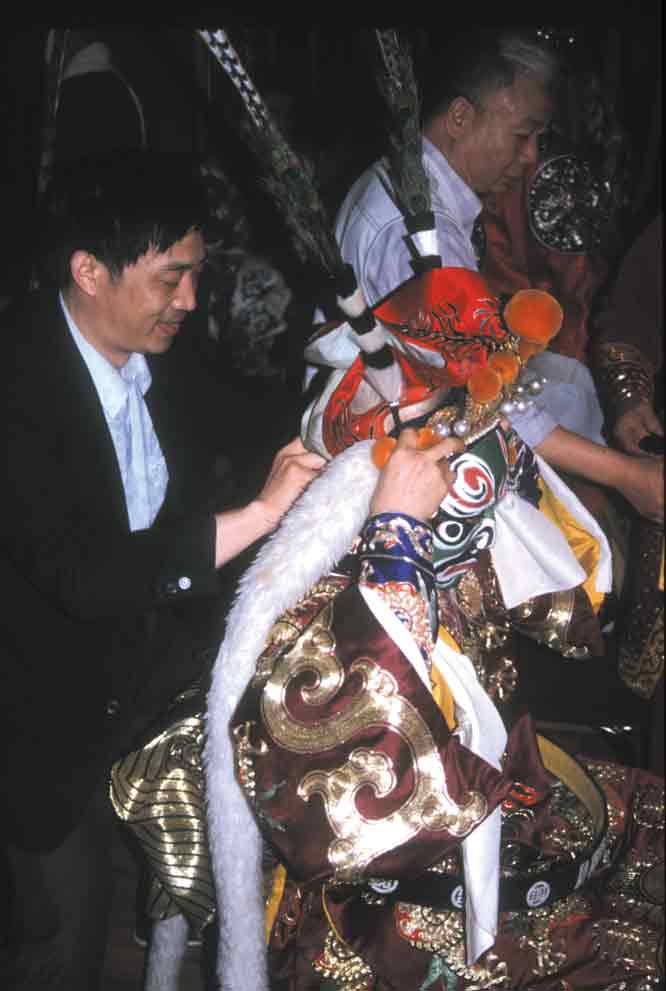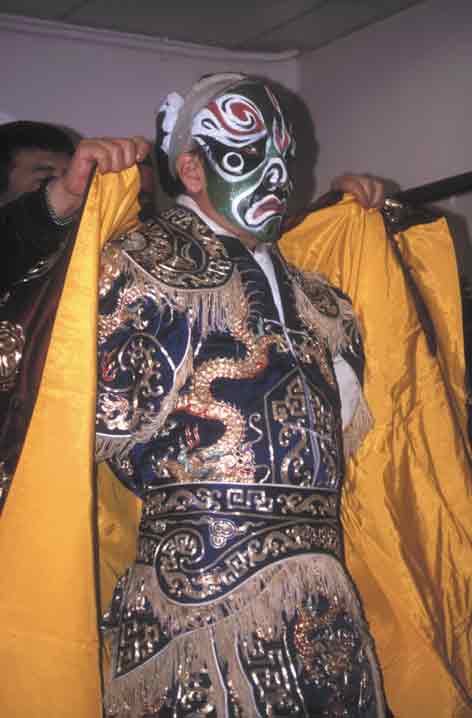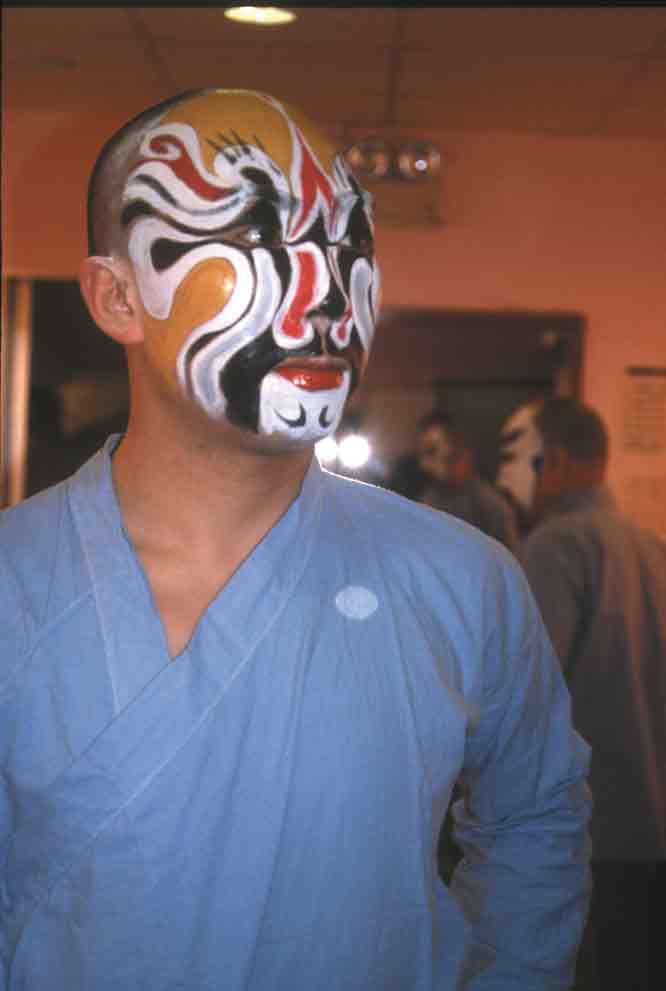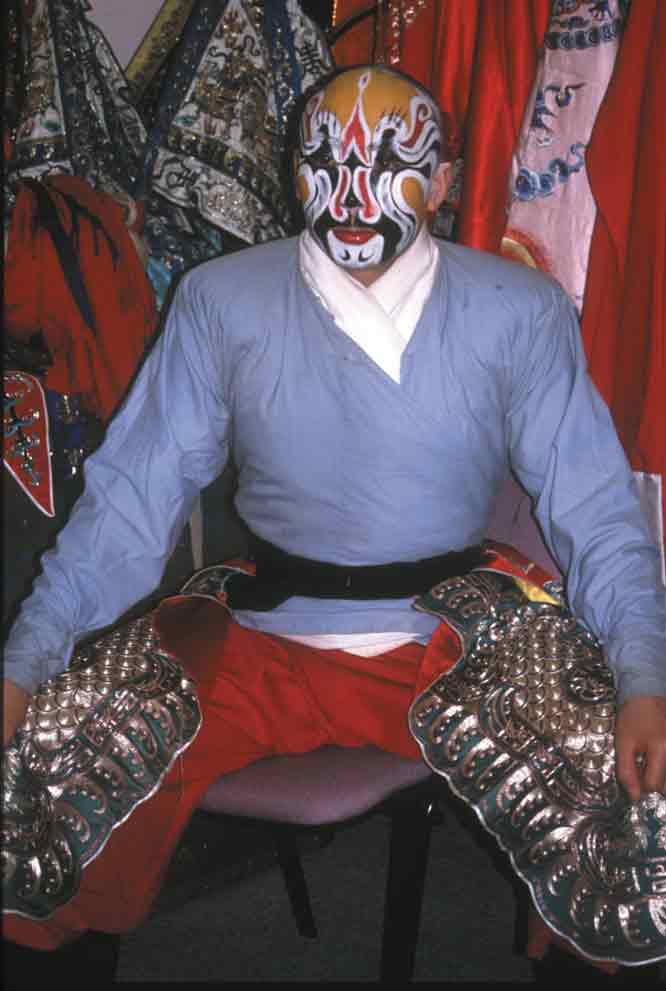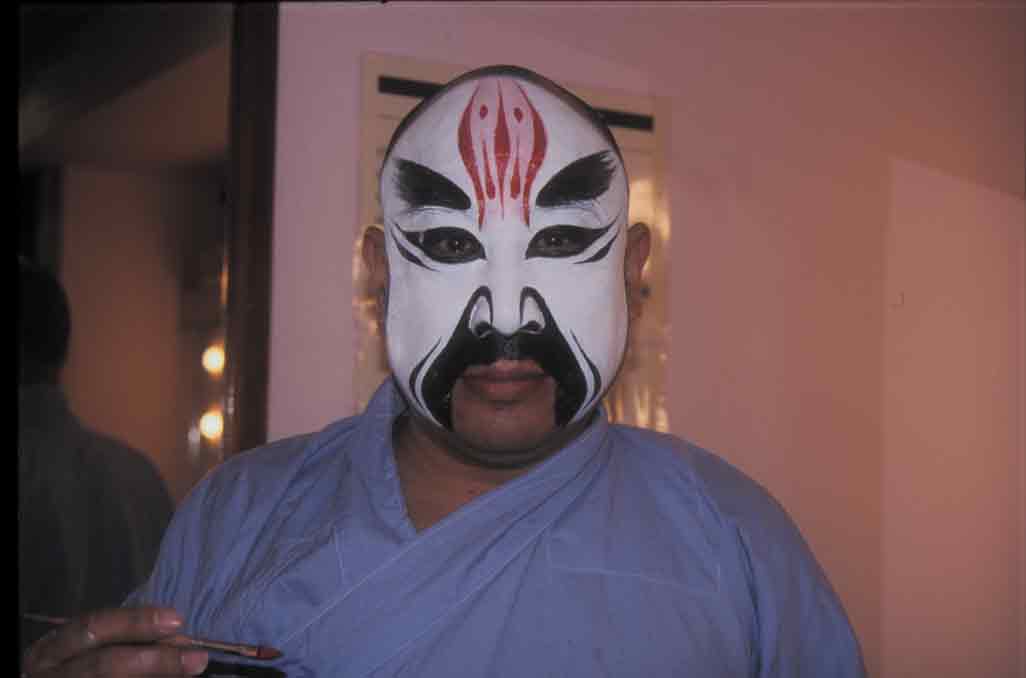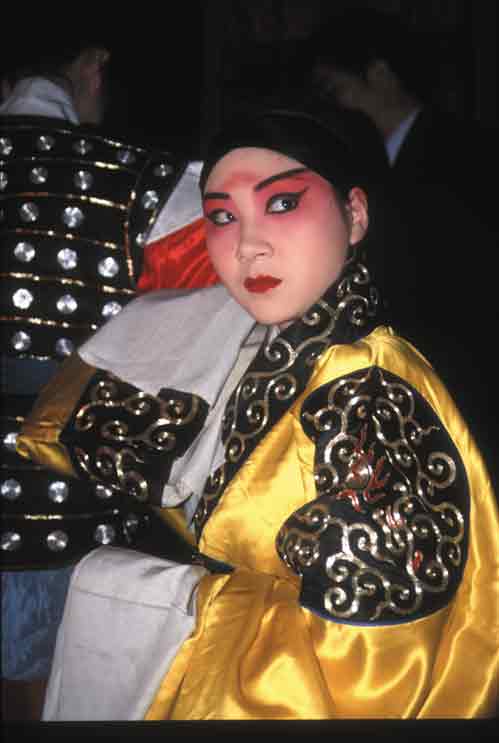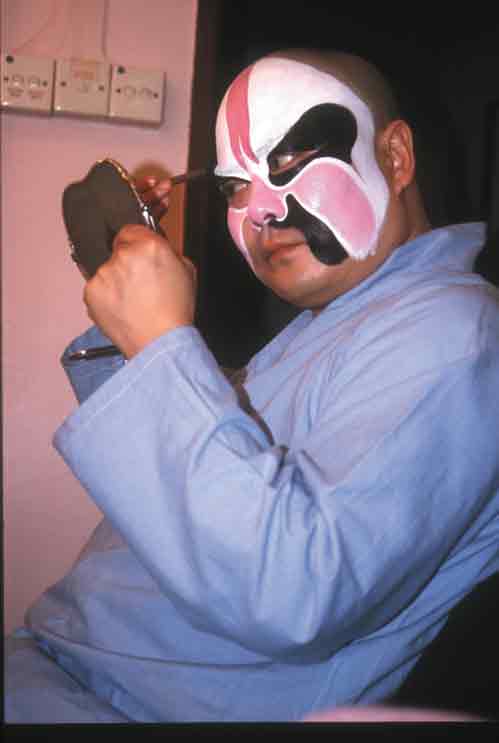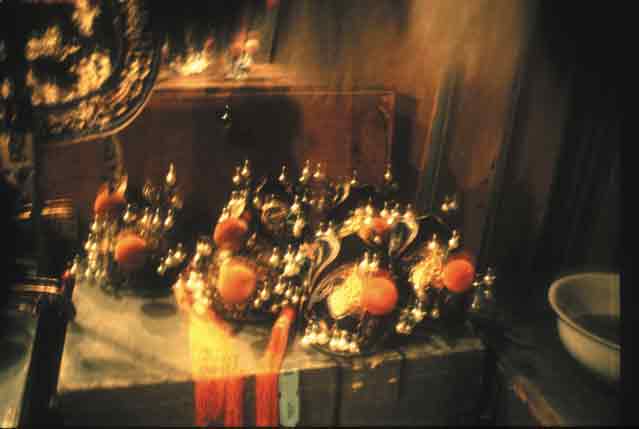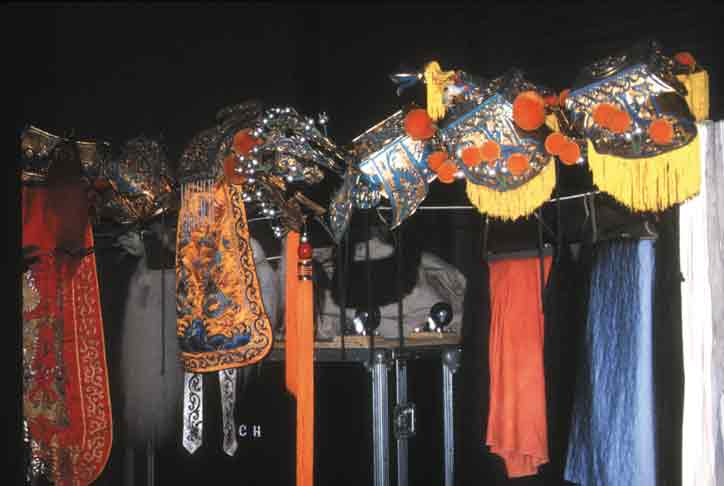Beijing Opera
The face of drama
Photos & text by
Jacqueline Au, Roe Chan & Charis Ma
Gorgeous costumes, expressive
body movements and furious
beats of gongs and drums are
found on the stage. They cause the audience to reminisce.The overwhelming experience of colour, sound and movement is an attribute of Chinese opera. Its history can be dated to 3,000 years ago, the time of the Zhou Dynasty.
Later, Chinese opera enjoyed a golden period in the Yuan Dynasty. However, it faded from popularity during the Cultural Revolution from 1966 to 1976. Now being promoted by the Chinese government, Chinese opera has regained its lustre in recent years.
Beijing opera is one of the most attractive forms of Chinese opera. The artists wear magnificent embroideries, colorful make-up and distinctive accessories. They act out well known Chinese ancient tales and legends, such as stories of the Monkey King.
In Beijing opera, characters are divided into four groups: dan, sheng, chou and jing. They represent the female, the male, the clown and the painted face, respectively.
Each group has its own singing and speaking styles, gestures and costumes. The audience can identify the artists according to their dress and make-up, because the characters are painted on their faces.
In addition, the social status of characters is revealed by their costumes.Realism and naturalism characterize Western drama. In Chinese opera, however, symbolism is the leading characteristic.
Instead of bringing a living animal on stage, for example, Chinese opera artists wave a tasselled whip to indicate riding a horse. This allows room for the audience to imagine — the essence of Chinese arts.
A blend of song, speech, mime, dance and acrobatics, splendid indeed is Chinese opera.

Roe Chan A propman helps an actor to don his headgear. Roe Chan The use of rich colours in make-up makes the character stand out on the stage. Charis Ma The patterns on the face reflect the actors character. Jacqueline Au Beijing opera player communicates with audience through strong facial expression and steady gaze. Beijing opera actor applying his own makeup. Charis Ma Production of handmade hats requires craftsmanship. Different styles of hats are worn by different characters.
